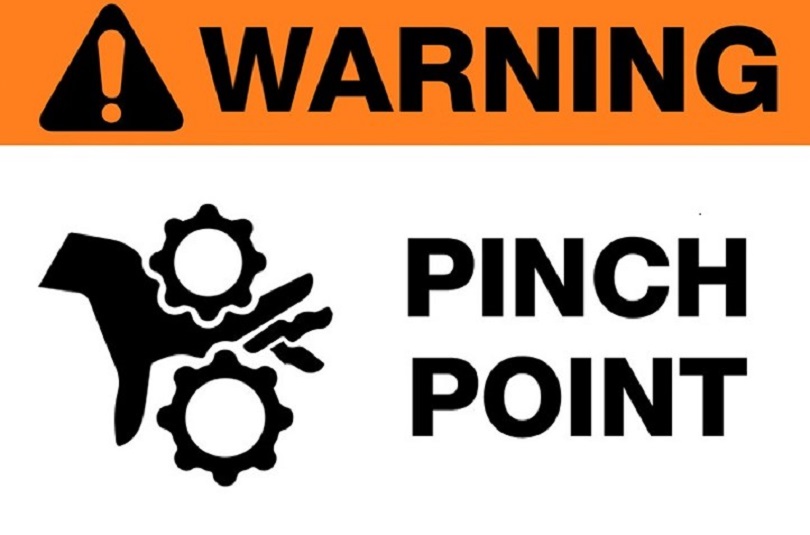Did you ever asked yourself What is A Pinch Point? Well I did and listen carefully – We use our hands for practically all work tasks that we do. Because of how often we use our hands, they are put in the line of fire where they can be injured. Hand injuries are the second leading type of injury worldwide.
A major type of injury to the hands and fingers on the job result from crushed-by type incidents.
What is a pinch point – is a hazard that led to crushed-by injuries.
What is a Pinch Point?
A pinch point is considered by definition as any point where it is possible for a part of the body to be caught between moving and stationary portions of equipment. Pinch points can be identified in most of the working places, even just closing/ opening a simple door can be a pinch point hazard. Tasks such as equipment maintenance, lifting materials, assembly and fabrication work are just a few common tasks where pinch points are a common hazard. Take a rest break when fatigue sets in. Just a few minutes can make a difference on finding what is a pinch point or not.

How to Avoid Pinch Points and Hand Injuries
Following the below few guidelines, will keep you safer on not really finding out what is a pinch point by experience it on your own:
- Eliminate the hazard by ensuring proper cover/ guarding is in place or keeping your hands away from pinch point altogether.
- Always be aware on your work environment and where your hands are placed while you are close to any moving parts or any objects that have the potential to rotate/ move.
- Always know the place where your hands are going – Do not place your hands where you cannot see them.
- Wear the proper gloves for the proper task – Always remember – One task, One pair of Gloves – you are completing to minimize the risk of injury to your hands if they do end up in the line of fire.
- Lock out Tag Out procedure is essential on avoiding on not experiencing what is a pinch point – When working on equipment ensure they are properly locked out and tagged out to prevent unexpected start up. Always Test before Touch.
- Even after isolation is applied we need to make sure that there is no stored energy – Properly block any equipment or parts where stored energy could be released.
- Good communication is essential when working with others – Let each other know if you are out of the line of fire before moving objects or starting up equipment – Permit To Work must be used on any of the situations to avoid SIMOPS.
In the end…
Often times it is not the obvious pinch points that injure a person such as a conveyor belt or a piece of moving machinery. Many times, tasks as simple as shutting a car door will end up in let us find out what is a pinch point injury due to not paying attention to where our hands are. It is important to not get complacent and always to remain focused on our task and working environment.
Important
The toolbox talks always must be a dialog and not a monolog. You need to be sure that all your team have a clear understanding of the discussed topic. ALWAYS ASK FOR FEEDBACK – THIS WILL HELP!
